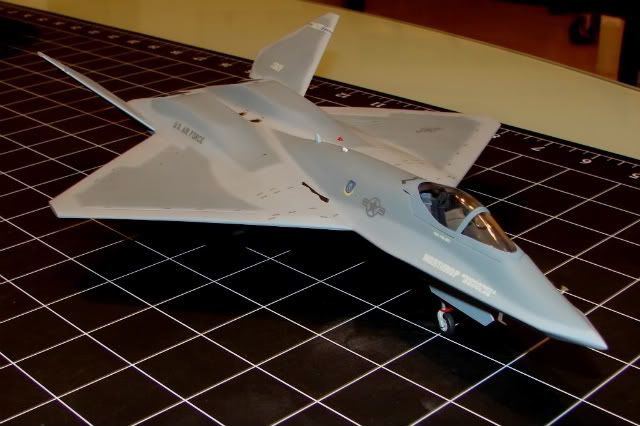It's an elegant design but I can see why the F-22 won the competition.
The F-22 prototype put on a better show than its rival and demonstrated superior maneuverability. Really, the Northrop flight test program for the YF-23 was pathetic. This in spite of a last-minute design change for the YF-22. I scratch my head in wondering WHAT Northrop was thinking with the flight tests. They didn't push their airframes nearly as hard as Lockheed did theirs. Little politics were involved in the ATF decision despite the naysayers. 'Nuff said.
The YF-23 story may not be over. Besides the one prototype airframe being restored for static display in Dayton, the other prototype has been involved in structural test programs and there's talk of modifying it to an attack aircraft configuration for a new USAF program. Of course, with all the current budgetary messes engulfing the US and the entire world, it's very likely that the last manned aircraft approved for a long time IS going to be the F-35 Lightning II.
There has been pipedream talk about a new manned (or unmannned?) bomber project -- it surfaced publicly in the most recent issues of Popular Mechanics or Popular Science -- but it's very likely that won't even get past a subscale flight test phase if any hardware is built at all. Again, there's just no money leftover for a plane that will probably cost in excess of at least $200 million per plane over its lifetime (that includes spare parts not limited to just engine changes and tires) and see a very limited production of probably no more than between 35-100 planes IF production goes that far.
Remember, there were supposed to be 120-some B-2 bombers produced and ultimately only 22(?) frames including non-flying structural test articles got built. The B-2 is by far the biggest lemon in the long-running history of lemons bought by the Pentagon. It's horribly expensive to maintain and has an availability rate 1/3 of the B-1's (63%) and 1/4 of the 60-year-old B-52 design (80+%)! Yep, it's a classic hangar queen no doubt!!
I live in Columbus and have been thinking of going back to Wright-Patt just for a day to see the new exhibits in the USAF Museum -- it's still easily the best military aircraft museum in the country! Heck, I think it's better than the National Air and Space Museum in many ways!











